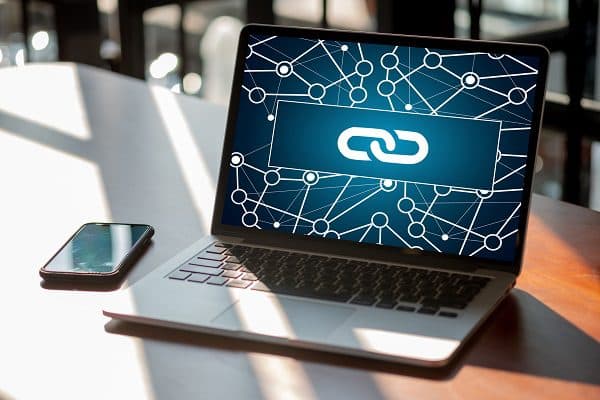Optimising the natural referencing of your website is essential if you want to increase its visibility and reputation. Backlinks are one of the components of the SEO (Search Engine Optimization) strategy and its "off-page" component, the netlinking strategy. So why integrate backlinks into your SEO strategy? How do you obtain and integrate these incoming links? What types of links should be favoured? We take a look at best practice with David Bedouet, digital strategy expert.

According to a HubSpot study on the state of inbound marketing in France, the SEO will be one of the key marketing channels in 2022. SEOs are driving optimisation to the max, both on and off websites.
On the website (on-page SEO), you need a clear architecture and well-separated sections. We work on a minimum of one page for each target key expression, with structured data and keywords present in the main "technical" elements. These include: the URL, the TITLE, the meta-description, the text content, images and various tags (ALT, TITLE)...
The search experience (SXO) must also be optimal, the site must be fast, it must be https and it must be responsive, i.e. adapted to different formats (smartphone, for example). Outside the website (off-page SEO), the presence and reputation of the site are important. This is reflected in the links that point to our site via other websites: backlinks.
1 - Backlink strategies
Historically, Google prioritised quantity. So the more backlinks we had, the higher our off-page SEO score: the famous "PageRank".
But abuse was rife. Creating dozens of web pages or registering with hundreds of directories was enough to get you into Google's top results.
Google and search results
Over 90 % of online experiences start on a search engine, usually Google.
After analysing the "keyword", the search engine uses its index to select web pages of interest to the user.
It presents them in an orderly fashion on its results pages. Each page generally consists of 10 "natural" results and up to 7 "paid" results (ads).
The aim is to classify these millions of pages according to what users want. The search engine rates them in real time, using over 200 criteria and applying filters: Google's famous algorithm.
In 2012, Google adapted and rolled out a new algorithm (Google Penguin) based on quality and trust. PageRank" is replaced by "TrustRank".
Today, SEO must be for the benefit of the web user. The best practices for creating links are designed to achieve this.
A link pointing to your website will be more relevant if it :
- is present on a site other than yours;
- is present on a site with high authority (recognised, with high traffic in your field of activity or on one of your themes);
- is found in the text content of a page with at least one complete paragraph ;
- is on a grammatically correct expression or word (link anchor) (not a string of keywords).
Worth noting
The hypertext link anchor is the text (word or words) on which the Internet user can click. Usually underlined, it allows one click to access new content on a new page. Sometimes this hypertext link is added to an image.
2 - The double advantage of backlinks
The backlink brings potentially qualified traffic and off-page SEO points.
How do I get a link?
There are several ways of obtaining a link:
- ask your partners to include a quality link to one of your web pages;
- canvass sites with a large audience or a high profile in your field of activity and establish a reciprocal, win-win relationship;
- or simply pay news sites or influencer blogs, which are paid for writing articles with links.
Please note that Google can tell the difference between a "real site" with real content and an artificial site designed solely for backlinks. It is therefore advisable to regularly monitor the origin of the links pointing to your site to avoid a poor rating by Google.
Create your own opportunities
By creating a blog or website on a domain name other than your main site, you become your own provider of backlinks.
However, there are still two opposing views in the world of SEO:
- have an internal blog to increase the authority of your main domain;
- have an external blog to further work on your backlinks.
Whether internal or external, your editorial strategy can become a real SEO asset by working on the quality and quantity of the content of your links and your semantic cocoon.
3 - Not all links are created equal
It's all a question of technique and checking links from other sites. Although they all bring traffic, only "dofollow" links are followed by Google's crawlers (or indexing robots), unlike "nofollow" links. A quality backlink is therefore a "dofollow" link.
Dofollow and nofollow links
Various attributes can be added to the coding of a hypertext link: "dofollow" or "nofollow" will tell the crawlers what to do.
Ex : <a href="/en/ »http://www.sitecible.fr »/" rel=" »dofollow »">Link anchor</a>
Worth noting
Links on social networks (posts, bio, comments, etc.) only bring in traffic, and not off-page points. They have no direct impact on SEO.
Support and analysis tools
To find useful backlinks, you need to target accessible sites, such as those of your customers, suppliers or partners, or by typing in a target query and listing the sites on the first page of search engine results (Sear Engine Results Page: SERP) that are not direct competitors and offer them the opportunity to be integrated into your strategy. Software such as Semrush provides an exhaustive listing of web competitors for the keywords that interest you.
Track your backlinks
It is essential to check whether links still exist, to check the quantity and quality of existing backlinks, and to check the anchors and nature of the sites that point to you.
There are many tools available for manual or automatic checking: Ahrefs, Majestic SEO or Semrush.
Other tools, such as Google Analytics 4, Matomo, etc., give you an overview of the sites that link to yours (tracking).
If you don't want Google to take the link into account because it comes from an inappropriate site, you can request that the link be disavowed from your Google Search Console via Semrush.
What you need to remember: off-page SEO is complementary, but much less controllable than on-page SEO, because it depends mainly on others and their willingness or ability to implement the backlinks that are useful to you. Whatever strategy you adopt, it is essential to monitor the quality of your backlinks on a regular basis.





